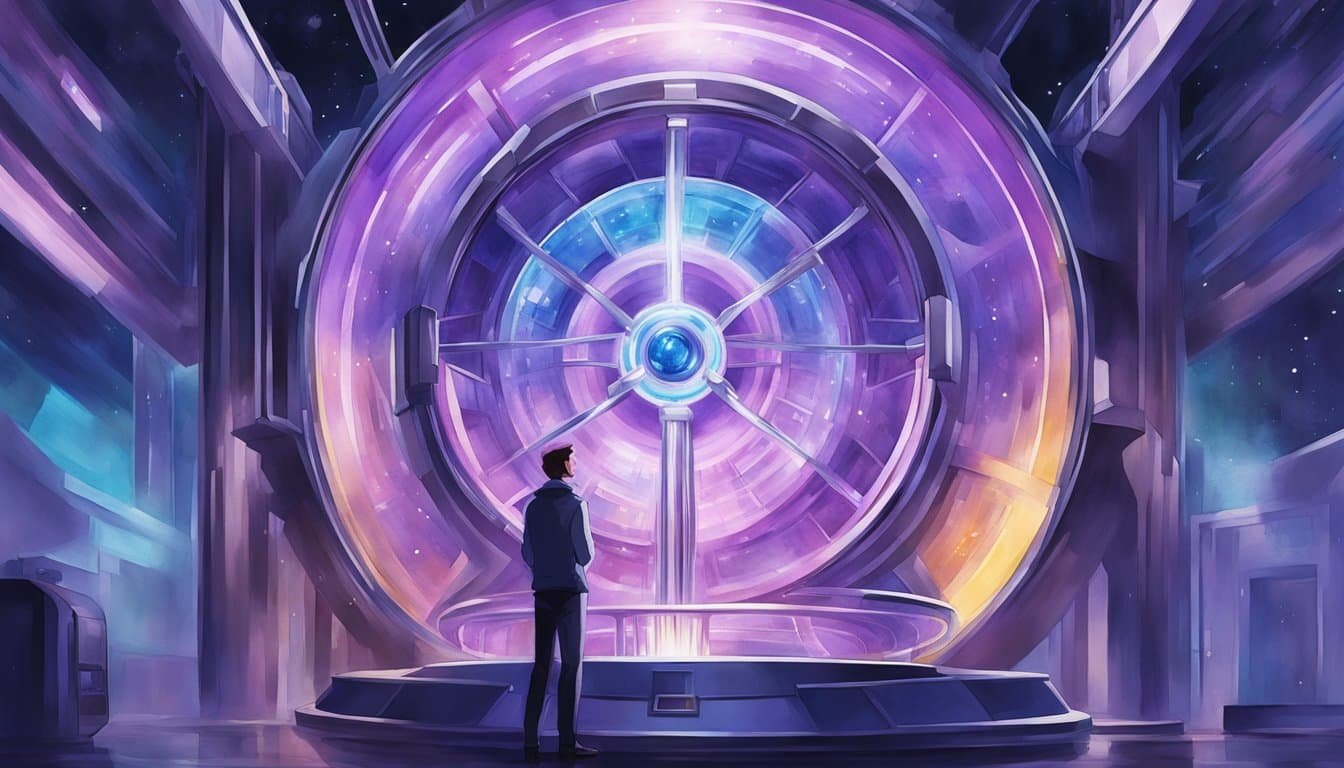Fundamentals of Plasma Reactors
Harnessing the power of plasma, the fourth state of matter, plasma reactors are crucial in fields like energy where they are key to the development of fusion technology.
Plasma: The Fourth State of Matter
Plasma is often referred to as the fourth state of matter, distinguished from solids, liquids, and gases. In plasma, electrons are stripped from atoms, forming an ionized gas with unique properties that can conduct electricity and respond to magnetic fields. This ionized state is crucial in the operation of a tokamak, a type of fusion reactor, which relies on plasma to conduct energy at high efficiency levels.
Magnetic Field Configuration
The heart of a tokamak’s plasma confinement lies in its magnetic field, meticulously designed to stabilize and contain the high-energy plasma. A toroidal, or doughnut-shaped, configuration allows the field lines to loop around the reactor, maintaining the plasma’s shape and controlling its interactions with the reactor walls. This confinement is achieved using superconducting magnets, creating a magnetic field strong enough to counteract the immense pressure from the heated plasma.
Key Components of a Tokamak
A tokamak’s technology is a marvel of modern engineering and physics. It consists of a toroidal chamber where magnetic confinement happens. Superconducting magnets encircle the chamber, producing magnetic fields that trap the plasma in a stable ring. Hydrogen, or other light elements, provides the fuel, which is heated to extreme temperatures, causing the nuclei to collide and fuse, releasing energy. The containment time of the plasma within the magnetic fields and the balance of pressure and temperature are critical parameters, guided by intricate scientific principles.
International Plasma Reactor Projects

Spanning across continents, leading scientific entities are racing to unlock the potential of fusion power. They are constructing colossal plasma reactors and creating strategic roadmaps, aiming to achieve a future fueled by clean and virtually limitless energy.
ITER: Advancements and Milestones
The International Thermonuclear Experimental Reactor (ITER) is a monumental science project, a collaboration of 35 nations to build the world’s largest tokamak in France. ITER’s mammoth design, with a major radius of 6.2 meters and a minor radius of 2.0 meters, aims at producing first plasma by 2025. The main goal of ITER is to demonstrate the feasibility of fusion as a large-scale and carbon-free source of energy. The ITER project is an epitome of international collaboration, drawing on the vast experience of experts globally.
Diverse Approaches: From JET to SPARC
Other endeavors include the Joint European Torus (JET), located in the UK, which is the world’s largest operational magnetic fusion experiment serving as a testbed for ITER technologies. Meanwhile, in the United States, the Massachusetts Institute of Technology and Commonwealth Fusion Systems are developing SPARC, a compact, high-field, superconducting tokamak, which aims to be one of the first devices to achieve net fusion gain, potentially paving the way for commercial fusion power plants.
Fusion Energy Roadmaps
Fusion energy roadmaps outline the strategic steps that different countries and consortia, such as EUROfusion and others, are taking towards achieving functional, sustainable fusion power. These roadmaps incorporate the collective knowledge from entities like CERN and technology from spherical tokamaks to streamline the journey to creating clean, compact, and efficient plasma generation systems.
Advances in Plasma Reactor Technology

The landscape of plasma reactor technology is constantly shifting with new innovations that push the boundaries of what’s possible in energy production. These advancements are rapidly transforming the efficiency and potential of plasma reactors, especially within the realms of superconducting technologies, artificial intelligence (AI), and clean energy production.
Superconducting Technologies
Superconducting materials are revolutionizing plasma confinement in fusion reactors by enabling magnetic fields of unprecedented strength and stability. They are critical in the development of tokamaks and stellarators, which seek to confine and control plasma for fusion energy. Superconductors allow these machines to operate at lower power costs, making fusion energy a more viable contender in the energy market.
Artificial Intelligence in Fusion Research
AI and machine learning, notably neural networks and reinforcement learning, are unlocking new frontiers in fusion research. Companies like DeepMind are collaborating with fusion physicists to optimize plasma confinement through advanced simulations. This collaboration leads to more efficient designs for fusion reactors and accelerates the construction and operation of these complex machines.
Future of Clean Energy Production
The advancement of plasma reactor technology possesses the potential to revolutionize the energy balance of power plants by providing a virtually limitless, clean energy source. As the technology progresses, fusion reactors could emerge as serious competitors on the energy market, offering a sustainable alternative to traditional energy sources and playing a pivotal role in the future energy landscape.
These technologies are not just scientific concepts but present a bright future for the planet’s energy needs. They’re the building blocks that could power the next generation of clean energy production, promising a world less dependent on fossil fuels and more on sustainable sources.

